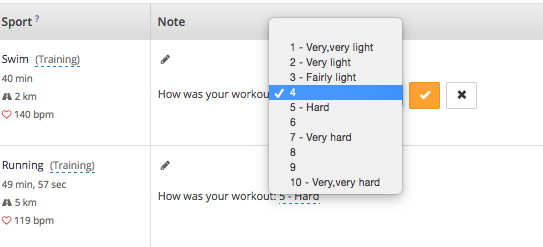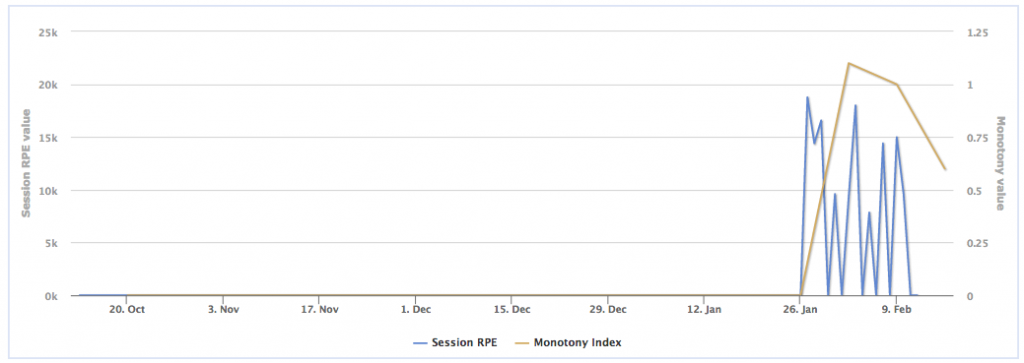The Rating of Perceived Exertion (RPE) is now available on SelfLoops.
The Rating of Perceived Exertion is a very common rating scale used in the scientific literature. It is a simple scale of asking someone how hard or difficult was the exercise or session. It is a good measurement of exercise intensity.
Perceived exertion is how hard you feel like your body is working. It is based on the physical sensations a person experiences during physical activity, including increased heart rate, increased respiration or breathing rate, increased sweating, and muscle fatigue. Although this is a subjective measure, a person’s exertion rating may provide a fairly good estimate of the actual heart rate during physical activity (Borg, 1982).
Since the 1980s thousands of studies have used this scale to evaluate how difficult the exercise session, training or competition was. Over multiple decades it has held up to scrutiny and is one of the best measures available. Even with all the great technology that is available today, the RPE scale is still the one of the most reliable and accurate ways to measure how intense an athlete feels a workout has been, source.
A few research articles:
Psychophysical bases of perceived exertion. Borg, Med Sci Sports Exerc.1982 PDF
A six-year monitoring case study of a top-10 cycling Grand Tour finisher,Julien Pinot, Frederic Grappe, Journal of Sports Sciences. Link
Validity and reliability of the session RPE method for monitoring exercise training intensity, L. Herman, C. Foster , M A Maher,R P Mikat , J P Porcari, SAJSM vol 18 No. 1 2006 Link
A New Approach to Monitoring Exercise Training, Carl Foster, Jessica A. Florhaug, Jodi Franklin, Lori Gottschall,, Lauri A. Hrovatin, Suzanne Parker, Pamela Doleshal, Christopher Dodge PDF
To use it in SelfLoops, you need to answer the question on how hard was your activity in a 0-10 scale in a list located next to your activities’ list. See below:
The outcome is your Session RPE that is the evolution of your training load, or better the Perceived Exertion.
In our analysis are included the following metrics.
Training Load: It is your RPE x minutes in the session.
Weekly Training Load: It is your weekly training load calculated as the sum of your week training loads.
Monotony:It is calculated using the weekly Training Load divided by its standard deviation. It measures how similar your training load was during the week. A high monotony increases your strain value.
Strain: It is calculated as Training Load x Monotony. A high value of the strain may highlight overtraining.

